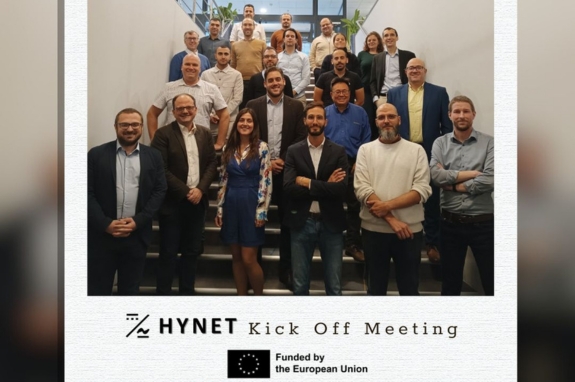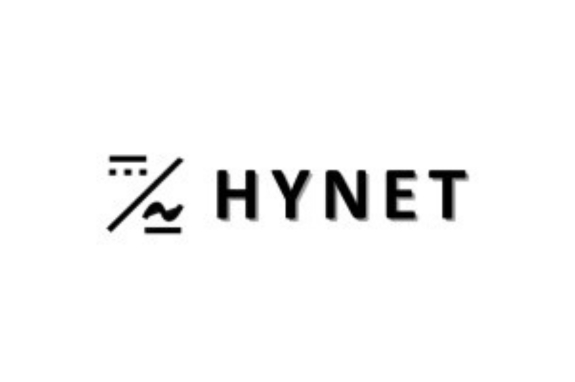DCforEU, FLAGCHIP & HYNET: SuperGrid Institute a major contributor in 3 new international projects!
Continuing on from our previous successful project bids, we are thrilled to be contributing to 3 new collaborative projects. Over the next few years, SuperGrid Institute will be working with new partners from across Europe to shape the future of transmission & distribution grids, facilitate the creation of new generation power electronics for the energy sector and guide European policy makers to help the EU reach its climate targets by 2050.
Our ongoing success within the Horizon Europe framework speaks to our recognised expertise and reputation amongst major international players within the energy sector. DCforEU, FLAGCHIP & HYNET are each impactful projects which contribute to our mission of accelerating the development of future power grids and the massive integration of renewable energies.
DCforEU : Direct Current for European Union
Guiding policy makers & decision makers to support DC technologies

The Direct Current for European Union, or DCforEU, project is a support mechanism for the European Commission’s Strategic Energy Technology (SET) Plan focusing on industry’s use and development of Direct Current (DC) technologies (high, medium and low voltages).
DCforEU coordinates the Implementation Working Group which consists of leading experts from industry, academia and other key stakeholders. The project supports the use of High-Voltage Direct Current (HVDC) and DC technologies to help the EU reach its climate targets by 2050 and actively tracks the progress of research and innovation activities on these technologies.
SuperGrid Institute’s contribution
SuperGrid Institute is leading Work Package 3, which is collating and identifying subject areas and initiatives required for the deployment of High Voltage DC grids, for the anticipated deployment of Medium and Low Voltage distribution infrastructure. The objective is to support the Implementation Working Group in delivery of their part of the SET Plan and define the Research and Innovation Requirements, proposals for industrialisation and deployment of technology, and proposals related to scaling the industry to meet demand and to achieve EC net zero goals.
List of partners: DCforEU is led by Katholiek Universiteit Leuven (Prof. Dirk van Hertum). Partners are Danmarks Tekniske Universitet (Prof. Nicolaos Cutululis), IEEE in Austria (Irene Kitsara) and SuperGrid Institute (John Moore).
FLAGCHIP : Flagship advanced solutions for Condition and Health monitoring In Power electronics
A project to ensure the reliability of grid power converters
Power electronics will play a critical role in energy transition, particularly in electric mobility, smart grids, microgrids, energy storage and power management. Increased performance, compact packaging and sensor integration have been identified as the next challenges.
As such, the continuity of service and reliability of power converters are essential. It therefore seems to be relevant to further develop Condition and Health Monitoring (CHM), carried out by foreseeing module aging and controlling the lifetime of power electronic components, as CHM remains perfectible and limited in industrial applications.
The FLAGCHIP Project, which brings together small, medium and large companies as well as academics from eight different countries, will develop new ageing monitoring techniques through the knowledge of junction temperature of Wide Band Gap components. Developing innovative structure and improved current packaging technology for the next generation of components will be also a significant part of the study. In addition, Ultra-wide Band Gap devices will be considered.
SuperGrid Institute’s contribution
SuperGrid Institute is present in almost every work package and is leader of Work Package 5 focusing on demonstration, testing and validation in FLAGCHIP pilots. This consists of an AC Power cycling bench, used to age devices to different levels and validate the operation of CHM board and CHM sensing. The objective is to get a better comprehension of ageing and failure mechanisms. The second pilot will be based on a bidirectional DC/DC converter (1.5 kV / 10 kV, 250 kW). This will validate the modules with CHM board and demonstrate successful operation in application environments.
List of partners: CIRCE (Coordinator, Spain), SINTEF (Norway), SuperGrid Institute (France), HITACHI (Switzerland), MERCE (France), MQ-SEMI (Switzerland), Q-PLAN (Greece), UNIVERSITY OF NOTTINGHAM (United Kingdom), CYPRUS UNIVERSITY (Cyprus), INSA LYON (France), HOCHSCHULE KEMPTEN (Germany).

Hynet : Pan-european interoperable AC-DC hybrid electricity networks
Study of new standards for AC-DC hybrid power systems
Today, the interest in direct current (DC) power transmission and distribution (T&D) systems within academia and industry has been rekindled mainly due to the proliferation of power electronic-based loads and the increasing deployment of distributed energy resources (DERs) which operate intrinsically in DC or have a DC stage. The European Commission plan aims to reduce Europe’s dependence on energy imports by increasing its total renewable energy generation capacities. To achieve this goal, the energy sector, including DC technologies, is expected to play a prominent role.

The HYNET projects aims to tackle the challenges of integrating renewable energy sources and power electronics into traditional AC systems. Key to this will be the introduction of new control algorithms, protection mechanisms, and grid-forming capabilities—all designed to improve grid management, enhance network security, support islanding operations, and facilitate investment planning.
Through real-world demonstrations in diverse settings, the HYNET project will establish a robust framework for the future of Europe’s energy systems, supporting the European Green Deal and a sustainable, reliable energy transition.
SuperGrid Institute’s contribution
SuperGrid Institute is contributing to two main themes in the project: the design and planning of HVDC grids, and MVDC grids.
The SuperGrid Institute team will also contribute to a comprehensive plan and design blueprint for MVDC networks. It will incorporate a detailed analysis assessing MVDC feasibility from both technical and economic perspectives and will also provide an overview of the project’s key technology enablers driving MVDC advancements.
List of partners: Ubitech Energy (Belgium), Supergrid Institute (France), Fundacion Circe Centro De Investigacion De Recursos Y Consumos Energeticos, Circe (Spain), Inesc Tec – Instituto De Engenhariade Sistemas E Computadores, Tecnologia E Ciencia, Inesc Tec (Portugal), University Of Cyprus (Cyprus), National And Kapodistrian University Of Athens (Greece), Budapesti Muszaki Es Gazdasagtudomanyi Egyetem (Hungary), Artelys (France), Sidroco Holdings Limited (Cyprus), Smart Sustainable Social Innovations Single Member P.C., 3si (Greece), Future Energy Innovative Technologies I.K.E.(Greece), Electricite De France, Edf (France), Statnett Sf, Statnett (Norway), Crnogorski Elektroprenosni Sistem Ad Podgorica, Cges (Montenegro), Transmission System Operator – Cyprus, Tsoc (Cyprus), General Electric Energy Power Conversion France (France).





